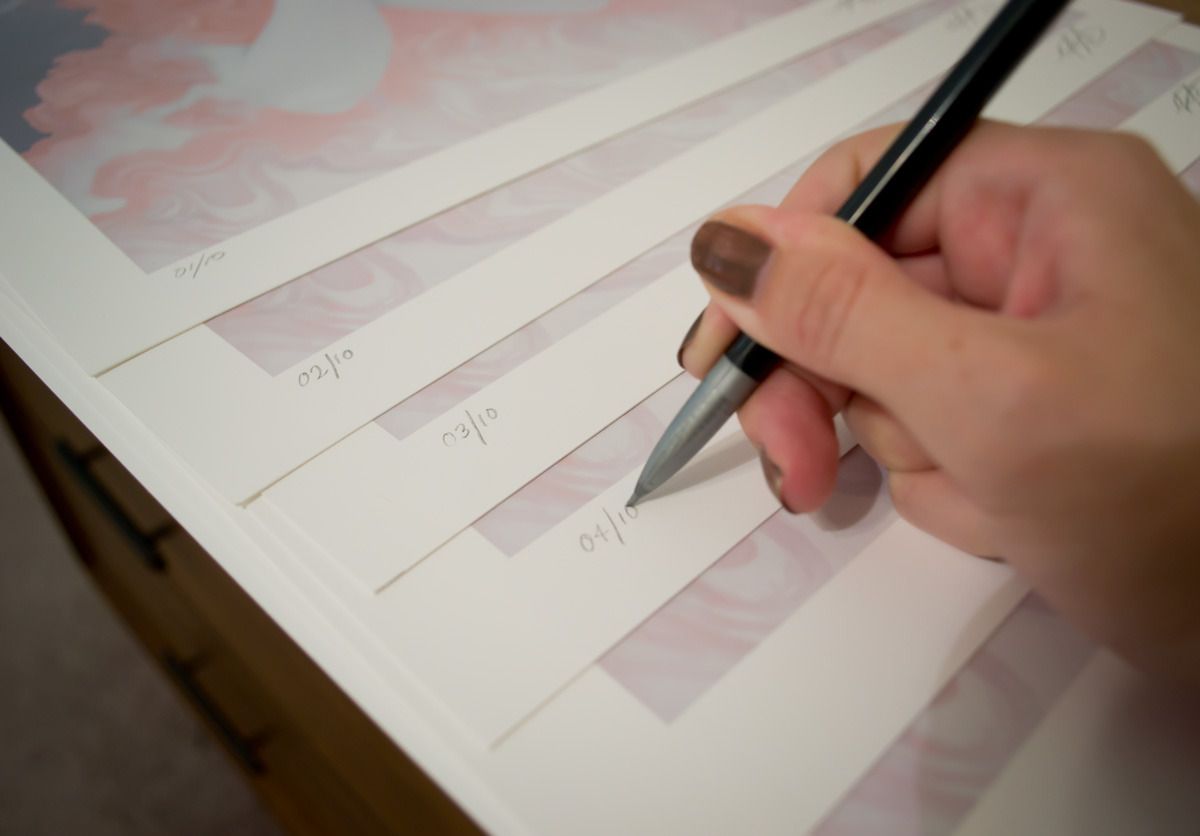
Debunking Art Myths: Edition Numbers

What is an edition number?
The art world is full of misconceptions: whether it’s about the proper way to buy and sell art, or how to act in settings like art fairs and galleries. We’re introducing our new series, Debunking Art Myths, to set some things clear.
We’re excited to kick off the series by exploring the myth surrounding edition numbers. To distinguish individual artworks within an edition, each piece is labelled with a distinct number. For example, you will often find this number at the bottom of a print (e.g. 1/50 up to 50/50). Because of this, there’s a common misconception that editions are sequentially numbered during the during the printing process, making prints with lower numbers inherently more valuable.
 Courtesy of Miranda Meeks
Courtesy of Miranda MeeksAre lower number prints more valuable?
To put it bluntly, no. Artists often assign edition numbers randomly while signing and dating their works. The allocation of edition numbers tends to be arbitrary, and does not necessarily indicate a print’s quality or rarity. The true value of a print lies in its craftsmanship and technique, rather than its edition number. A lower edition number, even ‘1’, does not automatically make it more valuable. In fact, the printing order doesn’t necessarily match the edition numbers. Artists often sign and number prints in batches, meaning the print labelled 1/100 might have been the last one produced. For this reason, the number of a print typically has no effect on its resale value.
The perceived significance of low edition numbers has varied over time. Historically, in traditional processes such as etching or lithography, lower edition numbers were linked to the actual printing process. For example, the first few prints were often clearer and sharper, as the printing plate was still fresh. The more prints that were made, the more the plate could wear down, impacting the result of later prints (with corresponding higher edition numbers). Today, advances in printing technology and strict quality control measures ensure that each print meets the standards set by the printing studio and the artist.
While it may have held more importance in the past, the contemporary art market now places greater emphasis on the overall demand for an artist's work and the uniqueness of each piece. Others place more importance on how large or small the edition number of a release is.
Happy collecting!
